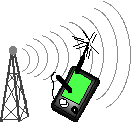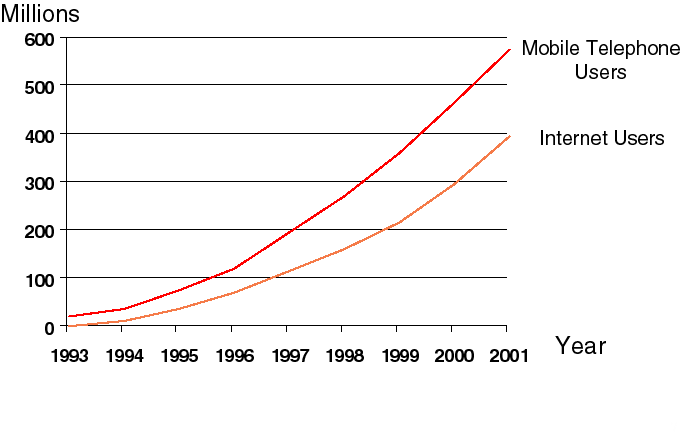
 |
JPL's Wireless Communication Reference WebsiteChapter: Network Concepts and Standards |
 Ubiquitous access to information, anywhere, anyplace, and anytime, will characterize whole new kinds of information systems in the 21st Century. These are being enabled by rapidly emerging wireless communications systems, based on radio and infrared transmission mechanisms, and utilizing such technologies as cellular telephony, personal communications systems, wireless PBXs, and wireless local area networks.
Ubiquitous access to information, anywhere, anyplace, and anytime, will characterize whole new kinds of information systems in the 21st Century. These are being enabled by rapidly emerging wireless communications systems, based on radio and infrared transmission mechanisms, and utilizing such technologies as cellular telephony, personal communications systems, wireless PBXs, and wireless local area networks.
 These systems have the potential to dramatically change society as workers become "untethered" from their information sources and communications mechanisms. While there is a rich body of knowledge associated with radio system engineering, the needed expertise must build upon this to encompass network management, integration of wireless and wireline networks, system support for mobility, computing system architectures for wireless nodes/base stations/servers, user interfaces appropriate for small handheld portable devices, and new applications that can exploit mobility and location information.
These systems have the potential to dramatically change society as workers become "untethered" from their information sources and communications mechanisms. While there is a rich body of knowledge associated with radio system engineering, the needed expertise must build upon this to encompass network management, integration of wireless and wireline networks, system support for mobility, computing system architectures for wireless nodes/base stations/servers, user interfaces appropriate for small handheld portable devices, and new applications that can exploit mobility and location information.

|
| Hear Randy Katz talk about research challenges in mobile computing. He also discusses how transport layer protocols and applications should anticipate to fading and channel throughput fluctuations. |

|
 Short Course Slides on Mobile Computing
Short Course Slides on Mobile Computing Representative Reading List
Representative Reading List